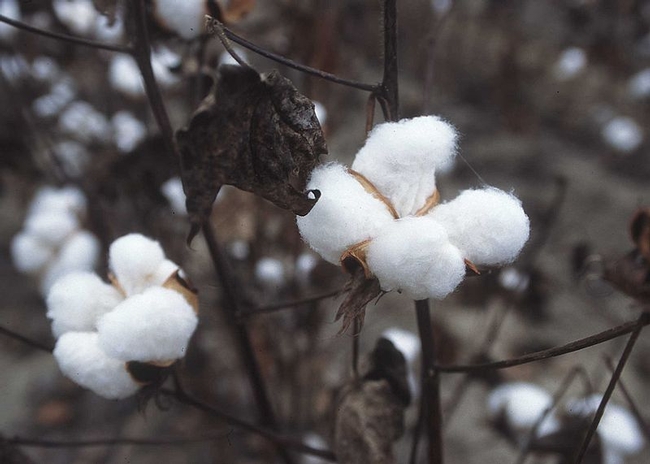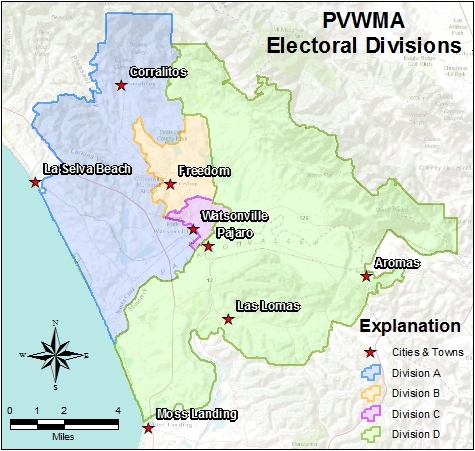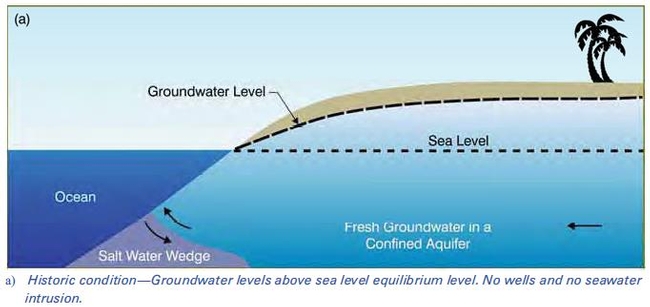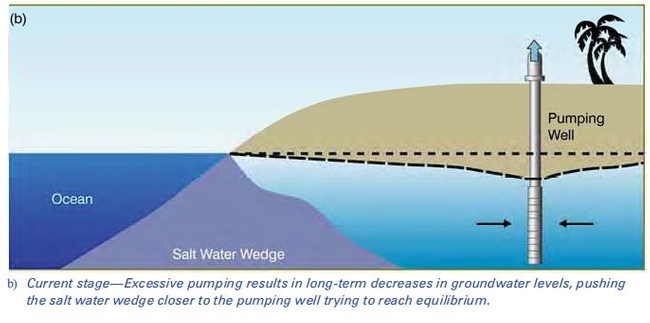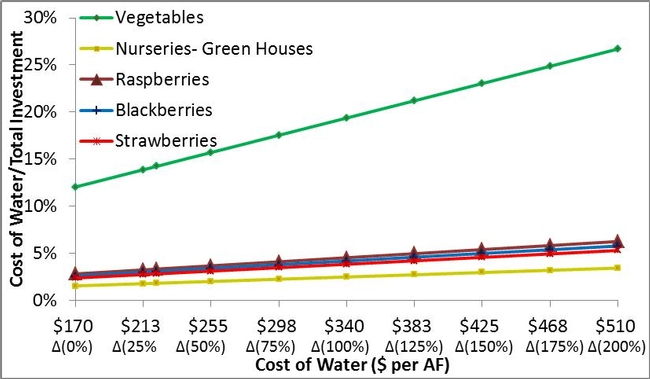Posts Tagged: water
Drought news dominates the headlines
NBC News spoke to Doug Parker, director of the California Institute of Water Resources, about drought implications already being felt in the California agricultural sector.
He said an estimated 500,000 acres of farmland sits unplanted due to water shortages, a number that could nearly double if the drought extends into 2015.
"In the long term, it could change some of the cropping patterns in California, especially for the animal industry," Parker told NBC, explaining that the economics of raising and tending livestock hinges on locally grown feed. "Without water to grow it, you really end up just having to sell off animals." Much of the state's beef cattle, for example, roam unirrigated rangelands that are parched.
Parker was also quoted in a drought story by Aljazeera America, which focused on Gov. Brown's $687 million emergency drought plan.
“I think it's a good first start,” Parker said. “But I don't think this will be the end of it.”
Gov. Brown's proposal doesn't provide funding for long-term solutions to California's water problems, but it could provide much-needed immediate assistance to many of the driest communities.
Capital Press spoke to Alan Fulton, UC Cooperative Extension advisor for Tehama, Colusa, Glen and Shasta counties, about the U.S. Bureau of Reclamation's dire 2014 surface water allocation plan. He said most farmers will rely on groundwater to get through the season.
"The main thing that will happen is just improving their wells and making sure they're operable,” Fulton said. “They're trying to manage through the drought with hopes of a wet year next year.”
Mother Jones featured a drought story rich with infographics outlining the surprising amount of water required to grow common food crops and the amount of water used per person per day in California communities. The article includes commentary from Jay Lund, professor of civil and environmental engineering at UC Davis, about the future of agriculture in the Golden State.
Lund said the state's current water problems mean agriculture may soon play a less important role in California's economy, as the business of growing food moves to the South and the Midwest, where water is less expensive. Production rates for thirsty crops like alfalfa and cotton have already diminished significantly in the last few years, Lund said. Between 2006 and 2010 alone, the amount of land irrigated for cotton fell by 46 percent.
Optimizing irrigation may ease groundwater overdraft in Pajaro Valley
In the Pajaro Valley, an agricultural region in Monterey County, residents are being proactive about water conservation policies and seeking ways to save water.
Groundwater makes up roughly 90 percent of the water delivered by Pajaro Valley’s Water Management Agency (PVWMA). There is a current overdraft of groundwater in the aquifers of this region, which calls for immediate action to protect their water source. Historically, the amount of groundwater in the aquifer was above sea level so the amount of salt water in the freshwater aquifer was kept at bay. Removing too much water from the ground at a faster rate than it is being replenished has caused seawater from the Pacific Ocean to enter the aquifer as the water level tries to even out. This seawater intrusion impairs water quality because saltwater is too saline for both agriculture and human consumption.
PVWMA is implementing seven different projects to control this seawater intrusion. One of these projects is their agricultural conservation program.
Agricultural conservation program
PVWMA asked Samuel Sandoval Solis, Ph.D., UC Cooperative Extension specialist in the Department of Land, Air and Water Resources at UC Davis, to help them with their agricultural conservation program. PVWMA wanted to know the volume water that could be potentially saved and the resulting economic impact of water savings on the valley.
The key to agricultural water savings is to water a crop to its evapotranspiration (ET) value. The ET value indicates optimum water amounts that should be applied in order for the water to be completely beneficial to the plants. To estimate the potential water savings, Sandoval and his UC Davis team – undergraduate student Vicki Lin and Ph.D. students Jenna Rodriguez and Belize Lane – had to determine how many growers were surpassing a crop’s ET value. The scientists interviewed growers to find out the volume of water each grower applied to the crops and the amount of money they invested in crop production. A statistical analysis was completed with applied water data of growers from PVWMA, information from the growers’ interviews, and expert-provided ET values to check for accuracy.
The scientists also analyzed land-use data sets from 2009 and 2011 for this project. The analysis focused on 2009 because it was a normal year in terms of groundwater extraction. They determined that Pajaro Valley can save between 4,600 and 5,100 acre feet per year through conservation. This agricultural water savings program is anticipated to contribute to 41 percent of the region’s total water savings just by using water more efficiently.
Vegetable growers would take hard hit
This increase in water savings results in a direct decrease in revenue for PVWMA ranging from $842,000 to $929,000. To compensate for this loss in revenue, a potential increase in water extraction fee rates was analyzed. An increase in water fees will affect farmers, especially vegetable crop growers in the coastal region of Pajaro Valley because they already put 60 percent of their total net profits into their investment cost. These coastal vegetable growers currently receive estimated revenue of $3,910 per growing season. If their water rates are increased by 50 percent, or $103/AF, their revenue will be decreased 6.7 percent ($265) per growing season. The economic impact graph at right shows how an increase in rates will affect farmers, substantially lowering their net profit on crops. Growers of strawberries, raspberries, blackberries and nurseries have a larger return on their investments, so an increase in water fees will not affect them as dramatically.
The full 37-page report on this project can be downloaded from a link at the top of http://watermanagement.ucdavis.edu/cooperative-extension/water-savings-agriculture.
Why Honey Bees Need Water
Ever seen honey bees foraging for water on your outdoor clothesline? When Extension apiculturist Eric Mussen of the University of California, Davis,...
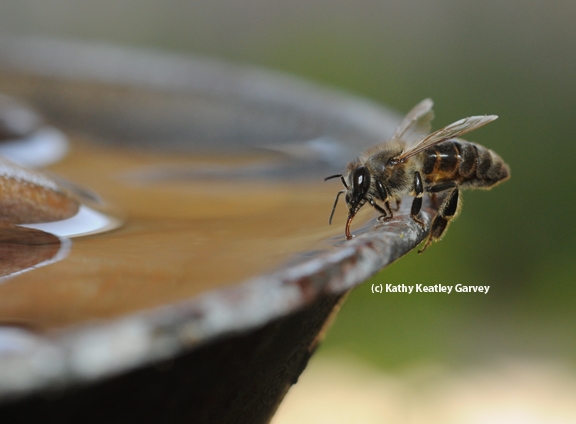
A Carniolan honey bee sipping water from a fountain. (Photo by Kathy Keatley Garvey)
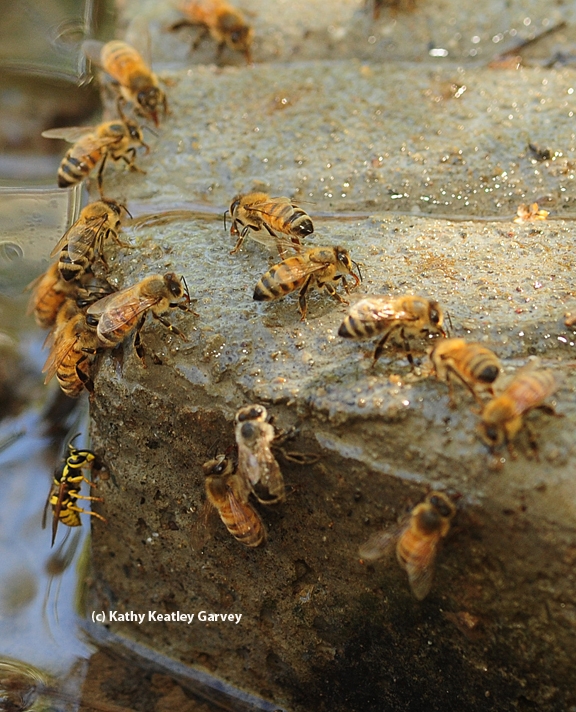
A yellowjacket joins honey bees in seeking water. (Photo by Kathy Keatley Garvey)
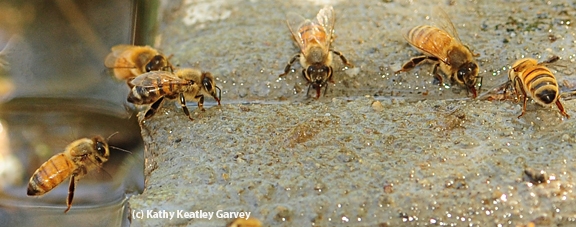
A honey bee, caught in flight, ready to join her sisters in gathering water. (Photo by Kathy Keatley Garvey)
Got Ants? Get S.E.R.I.O.U.S.
There is a new resource available to anyone that has dealt with ants. It is a website called Got Ants? Get S.E.R.I.O.U.S.! It is as they say on their website “a collaboration of public agencies, educational institutions, pest professionals, and nonprofits working to promote environmentally sound ant management and to protect water quality.” You may or may not know that the pesticides commonly used for ant control are some of the most prevalent and damaging in our waterways. People spray them on their own or hire companies to do it for them. The truth of the matter is that spraying is not the most effective or cost effective means of controlling ant invasions. The Got Ants folks have put together a very simple system for dealing with ants. Their acronym S.E.R.I.O.U.S. stands for:
S – Spot where ants are coming in.
E – Eliminate crumbs, messes and spills
R – Rinse with soap and water
I – Isolate food and water sources
O – Obstruct entryways and seal cracks
U – Use baits if ants don’t go away
S – Stick to it to keep ants away
In addition to strategies for handling ant invasions the Got Ants website asks you to make a pledge “to use less toxic practices (or hire a company certified to provide less toxic IPM services) the next time you have an ant problem.” I’ve added my name to the list. I encourage you to do the same.
By the way, if you want to read a synopsis of a study done by Stanford researchers that indicates that ant invasions, and more importantly, their retreat are due to weather, I'm including the link. As stated in the article; "People spend a lot of money on year-round pesticides," says Deborah M. Gordon, associate professor of biological sciences and lead author of the study, "but it's not the pesticide that keeps ants out of your home, it's the weather."
http://news.stanford.edu/pr/01/ants45.html

photo(39)
Mighty Mites on a Damselfly
It pays to have a pond. A pond attracts dragonflies and damselflies. Last weekend, though, we spotted a damselfly a good 65 feet away from our...

Damselfly, with water mites attached, lands on the leaf of a passion flower vine. (Photo by Kathy Keatley Garvey)


